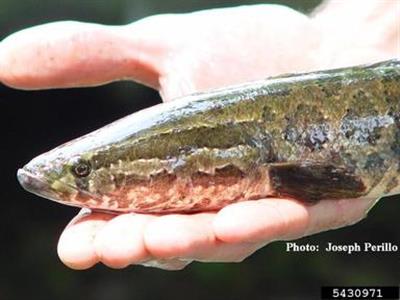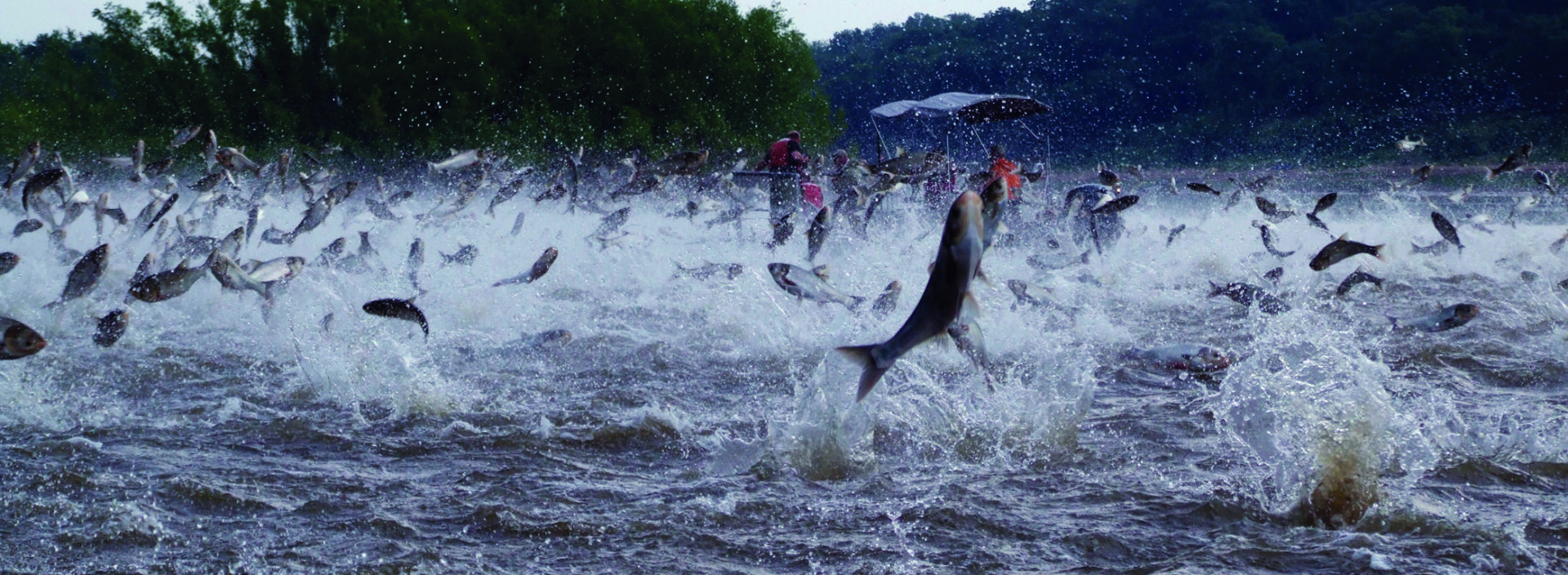
Where did the northern snakehead come from?
It is native to China and was introduced either from purchases at live-food markets or as aquarium pets. Individuals were discovered in other locations, but the first established population was found in Crofton, Maryland in 2002.
Why is it a problem?
Northern snakeheads are predators that compete with–and eat–native species for food. They can survive in a wide range of environmental conditions, including water with low oxygen levels. An established population is very difficult to eradicate.
What does the northern snakehead look like?
- Large cylindrical body, with adults up to 47 inches long
- Dark brown to tan with irregular blotches
- Long single dorsal and anal fins
- Large scales on the head give it the “snakehead” appearance
How can you distinguish it from native species?
The northern snakehead has a similar appearance to the native bowfin (Amia calva) and burbot (Lota lota). The bowfin has a short anal fin and no scales on its head, in comparison to the snakehead’s long anal fin and large scales on its head. The burbot has a single barbel in the middle of its chin, two dorsal fins and very small scales, in comparison to the snakehead’s single dorsal fin, no barbels and large scales on its head.
What habitat does it prefer?
The northern snakehead thrives in muddy or vegetated areas, with slow-moving or stagnant water.


